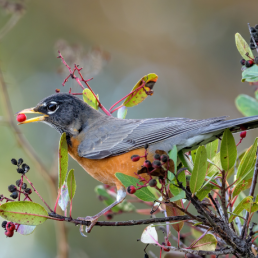

Join BirdNote tomorrow, November 30th!
Illustrator David Sibley and actor H. Jon Benjamin will face off in the bird illustration battle of the century during BirdNote's Year-end Celebration and Auction!
Joanna Buehler moved into her home on Lake Sammamish east of Seattle in 1987. The entire subdivision had been scraped clean and not a single tree or bush existed. She put in minimal landscaping at first – mainly grass seed and a few trees - and later added western red-cedar, coastal redwood, Doug-fir, mega sequoia, salal, and mahonia.
At that time, there was a small trickle of water that ran down to the lake, between her property and that next to her. King County had included a then-innovative condition - a grass-lined swale for plat runoff.

Alas, the swale did not function as intended because it was designed incorrectly and not properly installed. Furthermore, every concrete truck that delivered for all the other houses would hose off over the nearest storm drain, delivering messes that regularly killed the grass. The water ran from a storm drain...
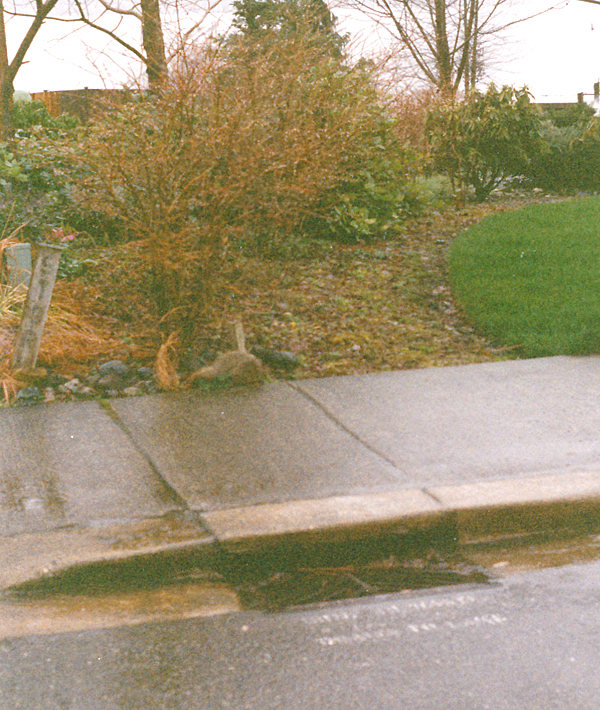
...and out of a pipe, onto her property. The swale flows only when it rains.
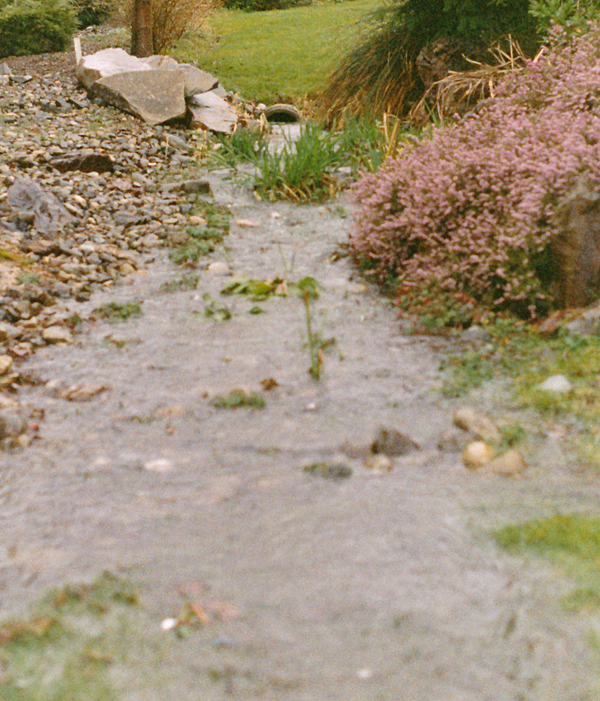
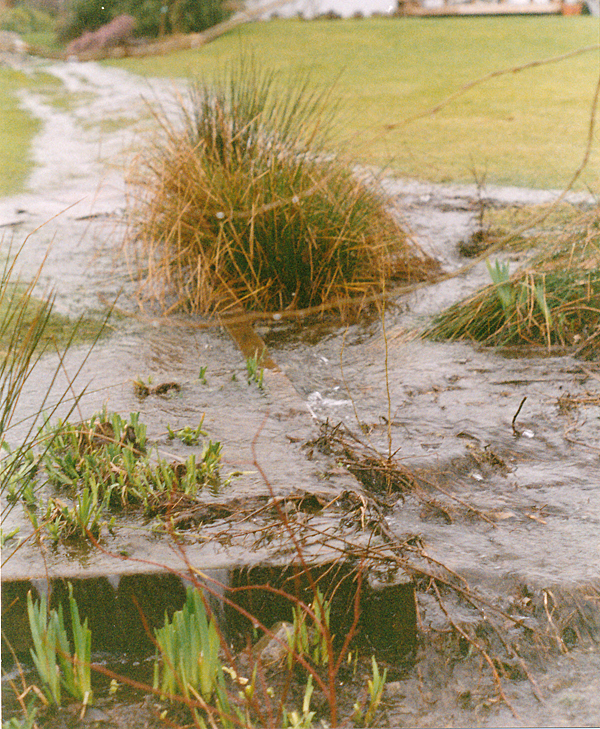
It carried pollutants, nutrients, and sediment directly into the lake.
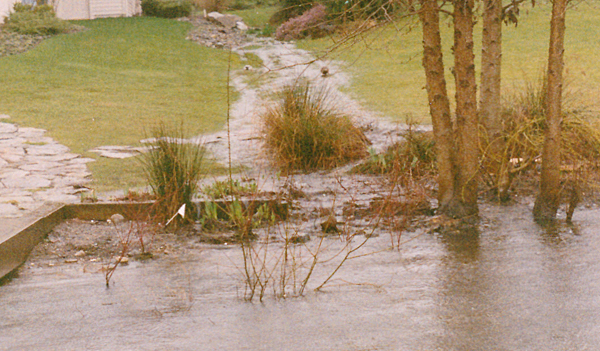
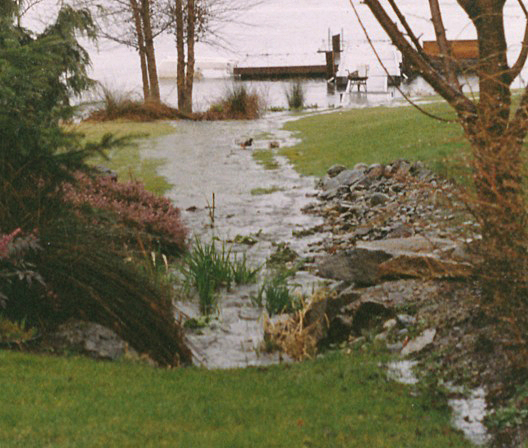
So Joanna created her own small "wetland," to filter the run-off. About 10 years ago, a new plat further up-slope was developed and was allowed to tie into the plat drainage system. This has increased flows, but her wetland -- complete with camas and peltatum -- manages to capture a lot of the water, except in heavy rains.
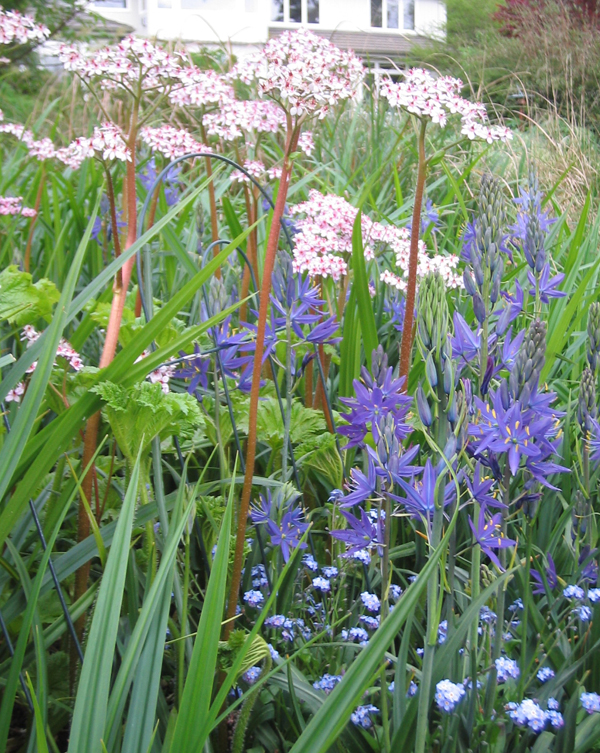
Today, the water flows out of the pipe and into her wetland, which performs the following functions:
1) Plants absorb some of the nutrients and pollutants from the storm water runoff.
2) The flow from pipe to lake is slowed, allowing sediments to drop out before reaching the lake.
3) Some water is infiltrated into the soils before it percolates slowly into the water table.
A small stand of black cottonwood trees planted themselves on the shoreline and now include a snag. Within a dozen years, a Belted Kingfisher, Bald Eagles, and other visitors started to use them as a regular perch for fishing. The shrubs on the left also provide great habitat for birds and wildlife and give her privacy from neighbors. The wetland garden is on the right.
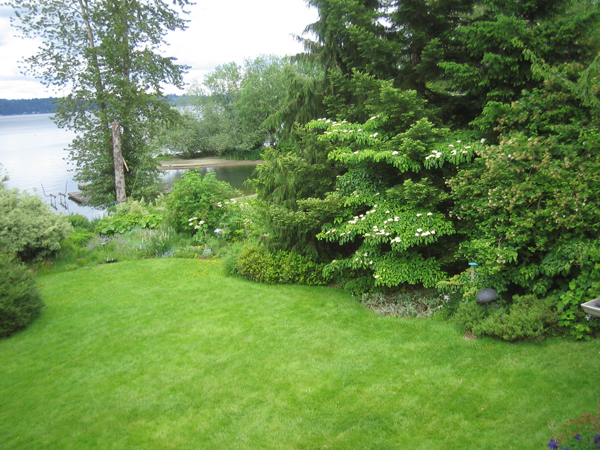
Joanna calls these "inverted umbrella leaves," and they work as "chickadee baths!" Peltiphyllum peltatum, a Northwest native, comes highly recommended in Art Kruckeberg’s book “Gardening with Native Plants of the Pacific Northwest."
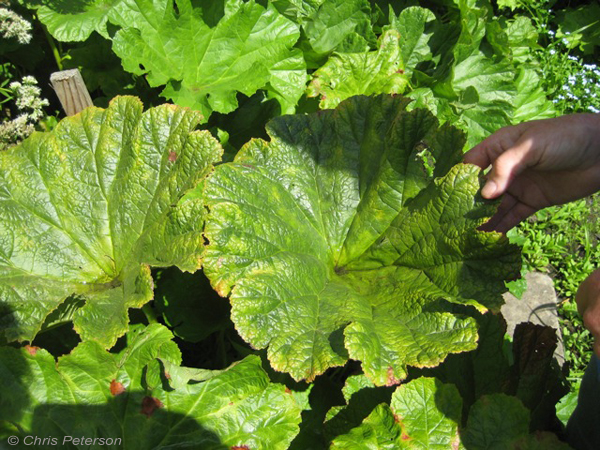
Not only does the little wetland cleanse storm water runoff flowing into Lake Sammamish, but its reeds and rushes also provide natural lakeshore habitat for fish. The roots hold the shoreline in place - less erosion! And using mostly plants native to the Pacific Northwest...
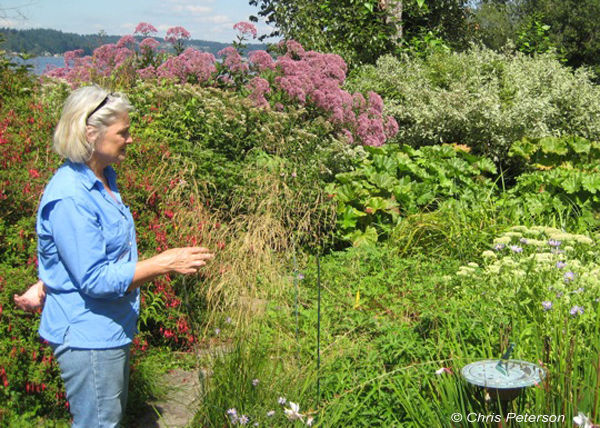
... Joanna created habitat for wildlife.
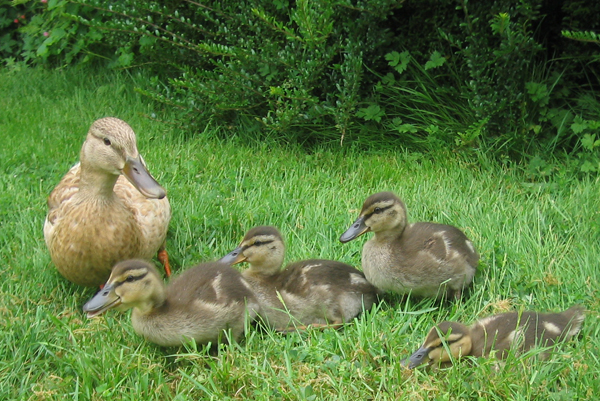
Birds that regularly visit include Cooper’s Hawks, Red-tailed Hawks, Great Blue Herons, Green Herons, Bald Eagles, Osprey, Belted Kingfishers, cormorants, Cedar Waxwings, Varied Thrushes, American Robins, Northern Flickers, Steller's Jays, towhees, Tree Swallows, Barn Swallows (10 nests this year on the house!) Red-winged Blackbirds, Song Sparrows, American Goldfinches, chickadees, Anna’s Hummingbirds (year round), Rufous Hummers (seasonal), lots of wrens, and other tiny birds. Joanna once came almost face to face with a Great Horned Owl, startling both of them! They also have beaver, river otters, muskrat, an occasional deer, and a bunny explosion.
###
Learn more about Joanna Buehler's garden in this BirdNote show, Bird-friendly Planting in Fall.
As part of the adventure, Joanna started a nonprofit organization, Save Lake Sammamish, dedicated to the preservation of a precious natural resource. Learn more!
Photos by Joanna Buehler unless otherwise noted.
